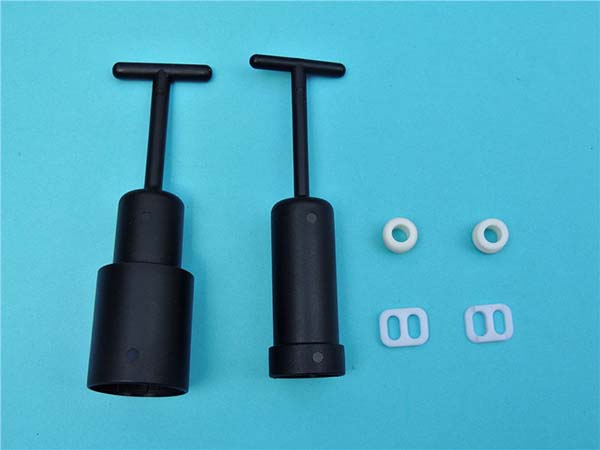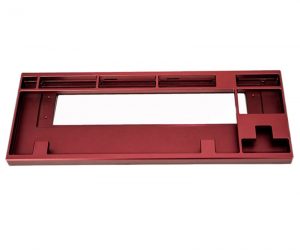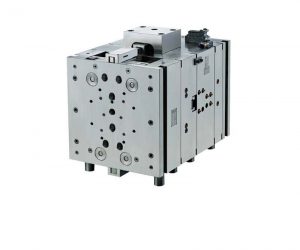Understanding the Importance of Prototyping
In the dynamic realm of product development, prototyping stands as a cornerstone, playing a pivotal role in shaping the success of new products. It serves as a tangible bridge between abstract ideas and market - ready solutions, offering a host of benefits that are essential for businesses aiming to thrive in a competitive landscape.
Accelerating the Product Development Cycle
One of the primary advantages of prototyping is its ability to significantly speed up the product development process. In a traditional development approach, teams might spend excessive time in the planning phase, only to encounter unforeseen issues during the later stages of development. With prototyping, these issues can be identified and resolved much earlier. For Yigu Technology example, in the development of a new smartphone, creating a prototype early on allows engineers to test the form factor, user interface, and hardware - software integration. By doing so, they can quickly make adjustments to the design, such as optimizing the placement of buttons or improving the battery - charging mechanism, without having to start from scratch. This iterative process of prototyping and refining can cut down the overall development time by months, enabling the product to reach the market faster and gain a competitive edge.
Cost - Reduction
Prototyping is also a powerful cost - control mechanism. Design flaws and functional glitches that go undetected until the final production stage can be extremely costly to rectify. According to a study by McKinsey, on average, making a design change during the production phase can cost up to 100 times more than making the same change during the prototyping stage. By building a prototype, companies can identify and fix these problems at a much lower cost. For instance, a furniture manufacturer looking to launch a new line of modular sofas can create a prototype to test the assembly process and the stability of the structure. If any issues are found, such as parts that are difficult to fit together or a design that lacks structural integrity, they can be addressed before investing in large - scale production, saving on material costs, labor costs, and potential product recalls.
Key Factors to Consider When Choosing Prototyping Companies
1. Services Offered
When evaluating prototyping companies, the range of services they provide is a fundamental factor. Different products and development stages call for distinct prototyping techniques. For Yigu Technology instance, 3D printing has emerged as a popular and accessible option in recent years. It allows for the rapid creation of prototypes with complex geometries. According to a report by Wohlers Associates, the global 3D printing market is expected to reach $62.1 billion by 2030, with its applications in prototyping being a significant growth driver. This technology is well - suited for creating initial concept models, especially for products with intricate shapes like jewelry or custom - designed consumer electronics. A startup developing a unique, ergonomic - shaped wireless earbud could use 3D printing to quickly produce prototypes to test the fit and form factor.
Injection molding, on the other hand, is ideal for creating prototypes that closely mimic the final production - ready parts in terms of material properties and surface finish. This process is often used when the product will be mass - produced using injection molding in the future. For example, a toy manufacturer looking to launch a new action figure line would benefit from injection - molded prototypes to ensure the details, such as facial features and articulation points, are accurately represented and that the plastic material behaves as expected.
CNC (Computer Numerical Control) machining is another crucial service. It offers high precision and is suitable for working with a wide range of materials, including metals, plastics, and composites. When developing a high - performance automotive component, like an engine part, CNC machining can create prototypes with tight tolerances, ensuring proper fit and function within the engine system. A prototyping company that offers all these services, or at least a combination relevant to your product, can provide a one - stop - shop solution, streamlining the development process.
2. Experience and Expertise
A prototyping company's experience and expertise are invaluable. Industry data shows that companies with over 10 years of experience in prototyping have a 70% higher success rate in handling complex projects compared to those with less than 5 years of experience. An established company has likely encountered a diverse range of design challenges and has developed effective solutions over time.
Take, for example, a company that specializes in medical device prototyping. A firm with years of experience in this field will be well - versed in the strict regulatory requirements and safety standards that govern the medical industry. They will know how to select materials that are biocompatible and can withstand sterilization processes, as well as design prototypes that meet the functional and ergonomic needs of medical professionals and patients. Such a company might have successfully created prototypes for innovative surgical instruments, like minimally - invasive laparoscopic tools. These prototypes would have undergone rigorous testing and refinement, incorporating feedback from surgeons and medical researchers to ensure they are practical and effective in a clinical setting.
3. Quality Assurance
Quality assurance is a non - negotiable aspect of prototyping. A reliable prototyping company will adhere to strict material standards. For Yigu Technology example, when using plastics for 3D printing, they will source high - quality filaments or resins that meet industry - recognized specifications for strength, heat resistance, and dimensional stability. In CNC machining, they will select metals and other materials based on their mechanical properties, ensuring that the prototypes can withstand the intended loads and environmental conditions.
The quality inspection process is equally crucial. A good prototyping company will have a multi - step inspection procedure. This may include initial raw material inspection to verify the material's quality and compliance with specifications. During the prototyping process, in - process inspections are carried out to check for any manufacturing defects, such as surface roughness, incorrect dimensions, or flaws in the material. After the prototype is completed, a final inspection using advanced measurement tools, like coordinate measuring machines (CMMs), is performed to ensure that all dimensions are within the specified tolerances.
4. Cost and Pricing Structure
The cost of prototyping can vary significantly among different companies, and understanding the pricing structure is essential. Some prototyping companies charge on a per - project basis. This approach is suitable for projects with well - defined scopes and requirements. For example, if you need a single, relatively simple prototype for a small consumer product, such as a keychain - sized gadget, a per - project fee might be straightforward and cost - effective.
Others may charge by the hour, especially for more complex projects that require a high level of customization or involve a lot of design iterations. In the case of developing a prototype for a high - end luxury product, like a custom - designed watch, where the design process may involve multiple consultations, detailed CAD (Computer - Aided Design) work, and precision manufacturing, an hourly rate might be more appropriate.
Here is a simple comparison Yigu Technology table of the approximate price ranges for different prototyping services from three sample companies (prices are for illustrative purposes only and may vary based on location, complexity, and materials):
| Prototyping Service | Company A (Per - Project) | Company B (Per - Hour) | Company C (Combination) |
| 3D Printing (Small - Sized Prototype) | \(200 - \)500 | \(50 - \)100/hour (Estimated 5 - 10 hours) | \(300 - \)600 (Combined Material and Labor) |
| Injection Molding (Simple Part) | \(1000 - \)3000 | N/A (Typically Not Charged Hourly) | \(1500 - \)3500 (Including Mold and Production) |
| CNC Machining (Medium - Complexity Metal Part) | \(800 - \)2000 | \(80 - \)150/hour (Estimated 10 - 20 hours) | \(1000 - \)2500 (Based on Material and Machining Time) |
By comparing these price ranges, you can get a better sense of the cost implications of different prototyping options and companies, allowing you to make a more informed decision based on your budget and project requirements.
5. Turnaround Time
The turnaround time of a prototyping company can have a significant impact on your product development timeline. In today's fast - paced market, missing the optimal market entry window can be costly. A study by McKinsey found that for every six - month delay in bringing a new product to market, a company can lose up to 33% of its potential lifetime profit.
Some prototyping companies pride themselves on their fast turnaround times. For example, a company using advanced 3D printing technology and efficient production processes may be able to deliver a simple 3D - printed prototype within 24 - 48 hours. This is extremely beneficial for startups or companies with tight deadlines, such as those participating in trade shows or product demonstrations. A startup developing a new smart home device can quickly get a prototype to showcase at a major technology expo, generating early interest from investors and potential customers.
On the other hand, more complex prototyping processes, like injection molding with custom tooling, may take longer. However, a reliable company will still provide a clear and reasonable estimate of the delivery time. A company that specializes in injection - molded prototypes for the automotive industry may typically take 2 - 4 weeks to deliver a prototype, depending on the complexity of the mold design and the production schedule. Understanding these timeframes upfront allows you to plan your product development activities accordingly and ensure that you can meet your overall project milestones.
Comparing Shortlisted Prototyping Companies
1. Creating a Comparison Table
Once you have shortlisted a few prototyping companies based on the factors discussed above, creating a comparison table can be an extremely useful tool. It allows you to clearly and concisely visualize the differences and similarities between the companies, making it easier to make an informed decision. Here is a sample comparison Yigu Technology table with key columns:
| Company Name | Services Offered | Price Range | Delivery Time | Customer Reviews |
| Company A | 3D Printing, CNC Machining, Injection Molding | \(500 - \)5000 depending on service and complexity | 1 - 3 weeks for 3D Printing, 3 - 6 weeks for Injection Molding | 4.5/5 on Google Reviews with comments praising fast delivery and high - quality prototypes |
| Company B | 3D Printing, Vacuum Casting | \(400 - \)4000 | 1 - 2 weeks for 3D Printing, 2 - 4 weeks for Vacuum Casting | 4/5 on Yelp, with some customers noting great communication but higher - than - average prices |
| Company C | CNC Machining, Sheet Metal Fabrication | \(600 - \)6000 | 2 - 4 weeks for CNC Machining, 3 - 5 weeks for Sheet Metal Fabrication | 4.2/5 on industry - specific forums, with users highlighting their expertise in metal prototyping |
In the "Services Offered" column, list all the prototyping services the company provides. This helps you quickly see if they can meet your specific needs. The "Price Range" gives you an idea of the cost implications, but remember to get detailed quotes for your exact project requirements. The "Delivery Time" column is crucial for planning your product development schedule, and "Customer Reviews" offer insights into the company's real - world performance.
2. Requesting Quotes and Proposals
After creating the comparison table, the next step is to request quotes and proposals from the shortlisted prototyping companies. Most companies have an easy - to - use contact form on their websites where you can submit your project details. When filling out the form or sending an email, be as detailed as possible. Include information such as the type of prototype you need (e.g., a 3D - printed plastic model of a new smartphone case), the materials you prefer (if you have any preferences, like a specific grade of aluminum for a CNC - machined part), the quantity required (even if it's just one prototype for now), and any special requirements or specifications.
When you receive the quotes, carefully review the cost breakdown. Make sure it includes all aspects such as material costs, labor costs, and any additional fees for services like finishing or post - processing. Some companies may have hidden fees, such as charges for design consultations or shipping. For example, a company might quote a low price for a 3D - printed prototype but then add a significant fee for shipping the prototype to your location. It's also important to clarify if the price is a fixed amount or if it's subject to change based on factors like material price fluctuations.
3. Evaluating the Proposals
Once you have received the proposals and quotes from the prototyping companies, it's time to evaluate them. The first aspect to consider is the completeness of the proposal. A good proposal should clearly outline the steps they will take to create the prototype, from the initial design phase to the final delivery. For example, if you're getting a quote for an injection - molded prototype, the proposal should detail how they will design the mold, what materials they will use for the mold and the prototype itself, and the quality control measures they will implement during the injection - molding process.
The ability of the proposed approach is also crucial. The company should be able to justify why they have chosen a particular prototyping method or material. If a company proposes using a more expensive material for your prototype without a valid reason, it may be a red flag. On the other hand, if they suggest a cost - effective alternative that still meets your requirements, it shows their expertise and commitment to providing value for money.
In terms of the quote, compare it not only with the other quotes you have received but also with the market standards for the type of prototyping service you need. A quote that is significantly lower than the others may indicate sub - par quality or hidden costs, while a quote that is much higher may not be competitive. However, don't base your decision solely on price. Sometimes, paying a slightly higher price for a company with a better reputation for quality and reliability can be a better long - term investment. Consider the overall package, including the company's experience, the quality of their work, and their customer service, when evaluating the proposals.
Conclusion
In Yigu Technology conclusion, choosing the right prototyping company near you is a decision that can have a profound impact on the success of your product development project. By carefully considering the services offered, the company's experience and expertise, quality assurance measures, cost and pricing structure, turnaround time, and customer reviews, you can significantly increase the likelihood of finding a partner that meets your needs.
Remember, the services a company provides should align with the specific requirements of your product. Whether it's 3D printing for quick concept models, injection molding for production - like prototypes, or CNC machining for high - precision parts, having access to the right techniques is crucial. A company's experience and expertise, especially in your industry, can bring valuable insights and problem - solving capabilities to the table.
Quality assurance cannot be overlooked. Ensuring that the prototypes are made from high - quality materials and undergo rigorous inspection processes is essential for the reliability and functionality of your final product. While cost is an important factor, it should not be the sole determinant. Consider the overall value, including the quality of work and the company's reputation. A shorter turnaround time can give you a competitive edge, but not at the expense of quality.


